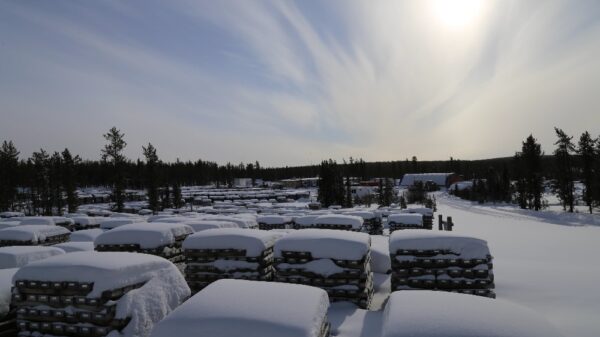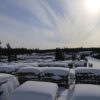Global uranium reserves could be depleted by the 2080’s if the demand for nuclear energy doesn’t slow down from its present pace, according to a joint report released Tuesday from the Nuclear Energy Agency and the International Atomic Energy Agency.
The agencies’ biennial Red Book reports a surge in uranium demand as countries and companies turn to nuclear power to cut fossil fuel use and support the rapid expansion of energy-intensive AI data centres. In addition, without significant new investment in uranium exploration and mining, supply may fall short.
The report finds enough uranium exists to support a “high-growth” scenario through 2050 and beyond. Consequently, it emphasizes that unlocking those resources requires major spending on exploration, mining, and processing. Under this scenario, global nuclear capacity would grow 130 per cent by 2050 from 2022 levels. However, that estimate uses data from early 2023, before renewed interest surged in nuclear energy.
East Asia is set to lead global growth, with nuclear capacity possibly rising 220 per cent from its 2022 total of 111 gigawatts.
Meanwhile, the US, UK, South Korea, and 20 other nations have pledged to triple global nuclear capacity by mid-century. They accordingly aim to meet net-zero targets by expanding nuclear power.
Iran, the report shows, holds the greatest potential in the region to boost uranium output. The country could therefore nearly quadruple its ore production, reaching 71 tonnes in 2025.
Alongside the existing Ardakan uranium production facility in Yazd Province, Iran is conducting feasibility studies for developing the Narigan production centre in the same region.
Read more: Molten salt reactor could be a reality in the next ten years
Read more: Government of Canada invests over $300M in next generation nuclear options
Nuclear fusion could be an alternative
Private sector investment continues to rise.
Tech giants like Google (NASDAQ: GOOG), Amazon (NASDAQ: AMZN), and Meta Platforms Inc (NASDAQ: META) are looking to power the next generation of energy-hungry data centres driving AI development. They want to use nuclear to do it.
In January, the International Energy Agency declared that nuclear power has entered “a new era.” Further, interest is at its highest since the oil shocks of the 1970s.
The agency further reported that annual nuclear investment jumped nearly 50 per cent between 2020 and 2023.
The technology is developing, however. There’s a probability the nuclear industry may move past fission and the need for uranium within the next few decades. Nuclear fusion offers the potential for nearly limitless clean energy by fusing atomic nuclei to release energy.
Two main devices aim to harness fusion on Earth: tokamaks and stellarators.
Tokamaks, such as the International Thermonuclear Experimental Reactor (ITER) project in France, use powerful magnetic fields to confine hot plasma in a donut-shaped chamber. ITER is a collaboration between 35 countries and represents the world’s largest fusion experiment.
Pietro Barabaschi, who became director two years ago, revised ITER’s timeline, delaying initial operation from 2025 to 2035.
Meanwhile, stellarators, like Germany’s Wendelstein 7-X, also confine plasma but use twisted magnetic coils to achieve stability without the need for strong plasma currents, potentially allowing longer operation times.
In the private sector, companies like Commonwealth Fusion Systems (a MIT spin-off), Helion Energy, and TAE Technologies are racing to commercialize fusion using novel designs and advanced materials.
.
joseph@mugglehead.com











